Do you want to learn how to stop counting calories?
You should.
It’s stressful, time-consuming, and difficult to do. Unfortunately, many experts claim that counting calories is the only way that you can lose or gain weight.
Thankfully, there is a simple way that you can measure your food intake and have a pretty good estimate of the number of calories you are consuming without actually having to count them.
Today we are going to teach you how to stop counting calories, using 1 unique strategy.
Keep reading.
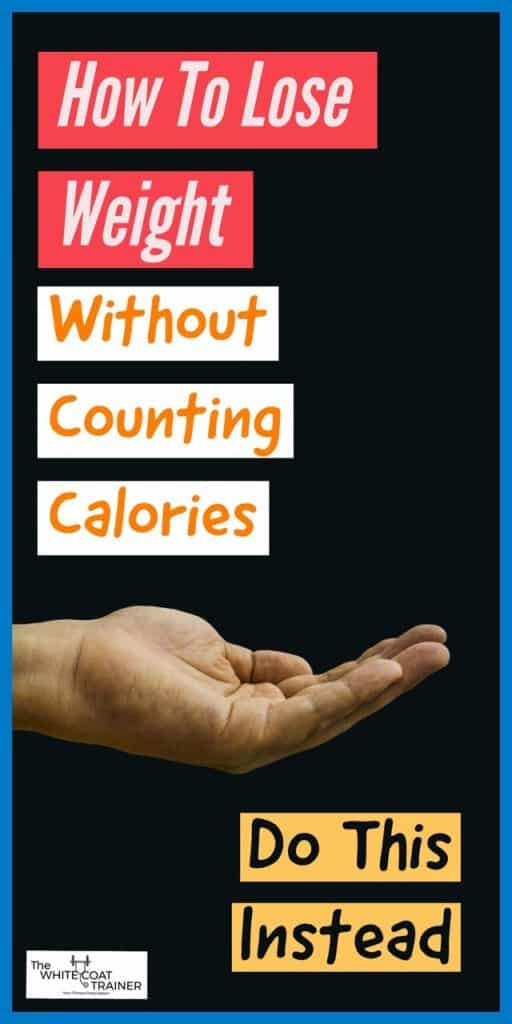
Do You Really Need To Count Calories?
The short answer is no. If your goal is to lose weight, you do not need to count calories.
It is extremely difficult to accurately estimate your food intake, nutrition labels are often inaccurate, and caloric absorption rates vary significantly between different foods.
Instead, you need a simple way to consistently measure how much food you are consuming on a daily basis.
What Are Calories Exactly?
Calories are a measure of energy.
They fuel everything we do, from walking to exercising, to breathing, to digesting food, to keeping your heart pumping.
According to the first law of thermodynamics, our body has to either use or store that energy in some way.
- If you consume more calories than your body needs, you will gain weight.
- If you consume fewer calories than your body needs, you will lose weight.
- If your calorie consumption is equivalent to your body’s needs, your bodyweight will not change.
As simple as this concept is, applying it to real life is much more difficult.
As I mentioned before, counting the number of calories you eat can be difficult, tedious, and often inaccurate. Counting the number of calories your body needs or uses up on a daily basis is even more challenging.
If you are not careful, you will be counting calories obsessively and carry a food scale with you everywhere you go.
Thankfully, you do not need to count calories as long as you have an easy way to measure and estimate the amount of food/calories you are consuming.
3 Steps On How To Lose Weight Without Counting Calories
So how do you lose weight without calorie counting?
It starts with classifying the foods that you are eating into 3 groups.
Step 1: Classify Your Foods
Almost every food group is considered a protein, a fat, or a carbohydrate.
Here are the most common examples of each.
Proteins:
- Chicken,
- Beef
- Salmon
- Shrimp
- Veal
- Tofu
Carbohydrates:
- Bread
- Rice
- Grains
- Pasta
- Potatoes
- Fruits
- Vegetables
Fat:
- Nuts
- Seeds
- Avocado
- Oil
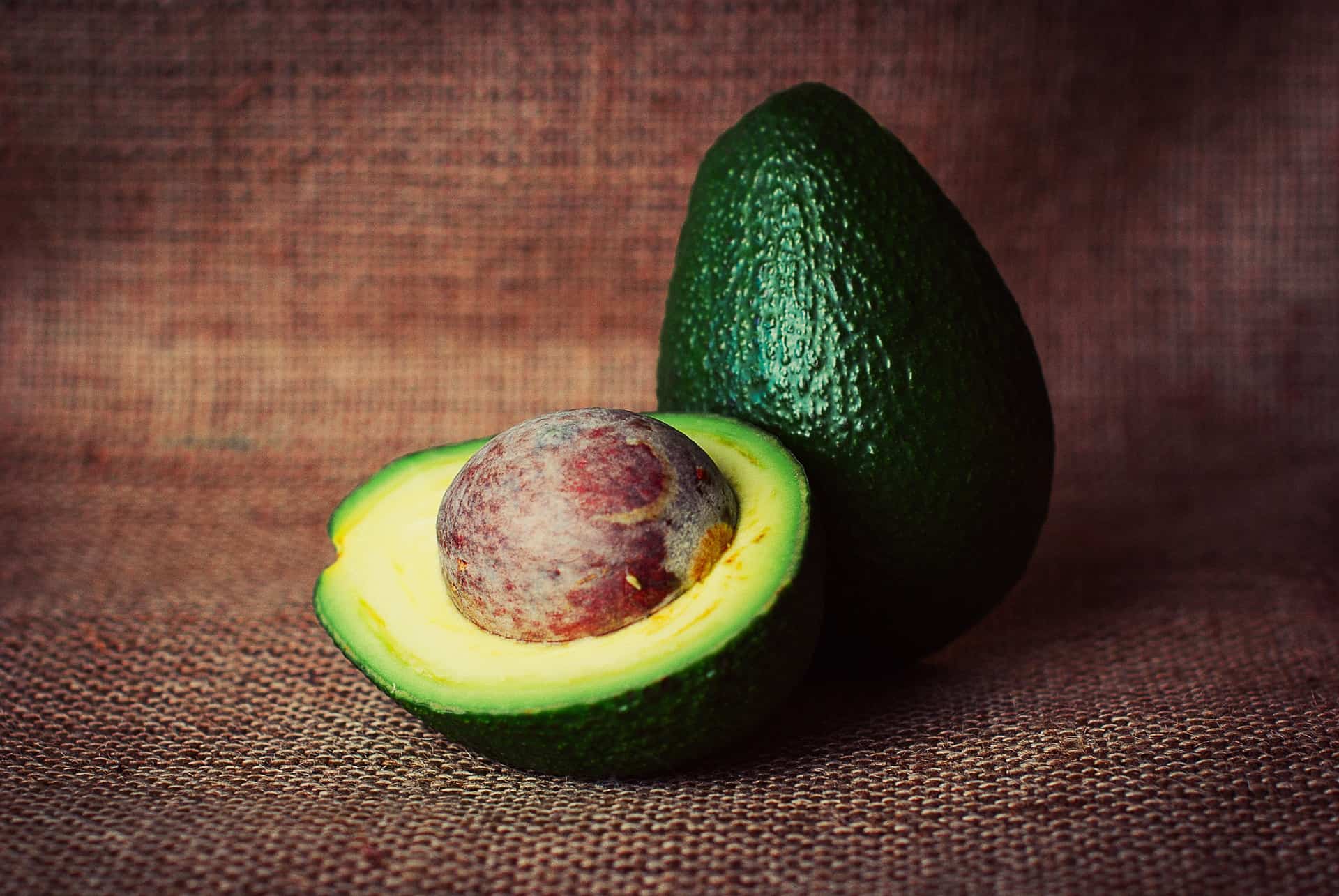
Just keep in mind that some food groups are a combination of the two
- Dairy is a combination of Fat and Protein
- Legumes are a combination of Carbohydrates and Protein
Just do your best. There is no need to stress over perfect categorizations.
Step 2: Estimate Your Serving Sizes Using Your Hand
Now let’s attempt to quantify the amount of food you had. Can you estimate how much of the protein you ate? What about carbohydrates?
Fortunately, there’s a quick and easy way to quantify your food.
Just compare the serving to the size of your hand.
Was the protein or the carbohydrate the size of your thumb? A couple of fingers? The size of your palm? Or was it closer to the size of your fist?
Your hand is the perfect tool to determine your portion sizes.
* your Fist is roughly the size of 1 cup
* your Cupped hand is roughly 1/2 cup
* your Palm is about 3-4 oz of food
* your Thumb is roughly the size of a tablespoon
Obviously, a female who is 5’3 and 110 lbs will have a smaller hand than a 6’2, 200 lb man but it doesn’t matter.
This doesn’t have to be an exact science. The calories on nutrition labels vary by large margins anyway.
Your hand will be personalized to YOU and those are the portions you should use for yourself.
Step 3: Follow These Serving Sizes
So how do you measure your portion sizes?
How much of each macronutrient should you consume?
Should you have a general idea of how many calories your meals should have anyway?
I will show you how your hand can help you answer each one of these questions.
The first thing that you have to do is create a meal that has something from each macronutrient (Carb, Fat, Protein) at each major sitting.
Now let’s go over how much of each you should eat.
CARBOHYDRATES
The macronutrient that people eat too much of is carbohydrates. This is because carbs are easy to eat in large quantities and they are overly abundant.
The most common carbohydrates are bread, cereals, rice, pasta, dairy, most desserts, and almost any drink that isn’t water.
To make matters worse, we are traditionally accustomed to having at least half of our plate be composed of carbohydrate.
When selecting carbs, it is helpful to choose whole wheat options and fiber-rich varieties.
- Whole wheat bread > White bread
- Whole wheat pasta > Regular pasta
- Quinoa > Brown Rice > White Rice
- Sweet Potatoes > Regular Potatoes
Whole wheat options have a lower glycemic index, which does not cause rapid changes in sugar/insulin levels like simple sugars do, while fiber helps slow down the digestion of carbs increasing satiety and further decreasing large fluctuations in glycemia.
Vegetables are also considered carbohydrates. Thankfully, they are in a totally different camp, and can almost be classified as a totally different food group.
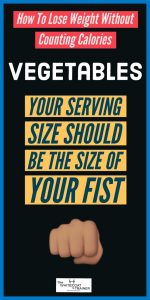
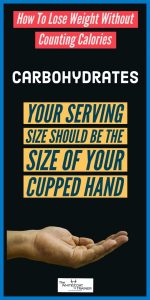
CARBOHYDRATE PORTION GUIDELINES
- If eating vegetables, your portion size could be the size of your fist.
- If eating non-vegetable carbs, your portion size should fit in your cupped hand.
- Women can eat 1 cupped hand per meal while men can consume 1-2 cupped hands per meal
FAT
Fat is the macronutrient that most people are afraid to eat.
Unfortunately, fat has gotten a bad rap from the media and many popular diets. Just look at how many foods have a big label reading “Fat-Free.”
The truth of the matter is, the vast majority of people don’t eat enough of the right kinds of fat- the ones that our bodies need, and the ones that actually have a multitude of health benefits. These are the mono and poly-unsaturated fats.
Even saturated fat is necessary for our diet. With that said, it is important to consume saturated fat in moderation.
If you remember absolutely nothing from this post, and you only take one thing away from it, it should be this: Please do not be afraid to eat fat!
Healthy fats are an excellent way to help maintain energy levels and satiation throughout the day.
In addition, fats have twice the calories as carbohydrates and proteins, which can help offset any large decrease in caloric intake that comes from eating fewer carbs.
You’re welcome.
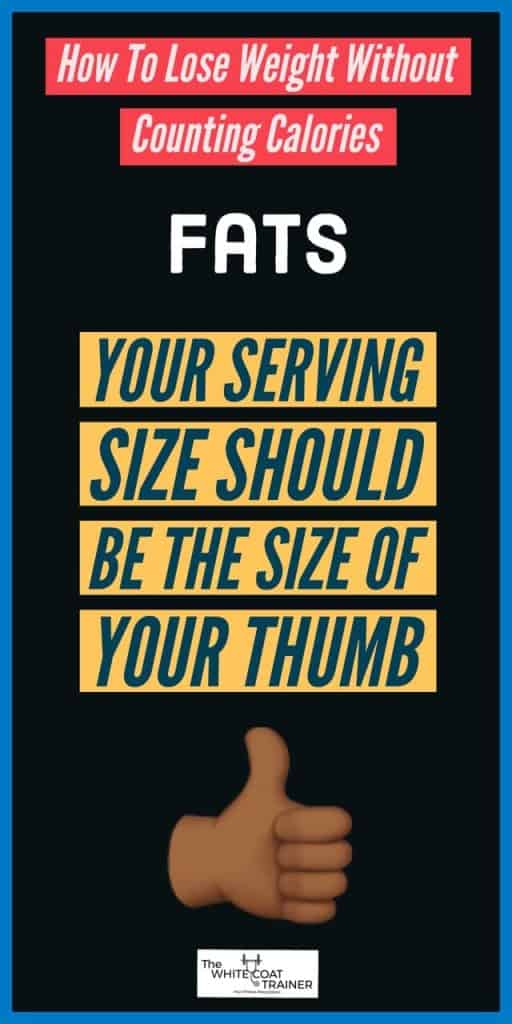
FAT PORTION GUIDELINES
- When eating fats, your thumb should represent one serving size.
- Women can consume one serving per meal while men can consume up to 2 servings per meal.
PROTEIN
Protein is the most important macronutrient. Protein is always essential.
Protein is necessary to make enzymes, proteins, hair, nails, and of course muscle.
Muscle is by far one of the healthiest tissues you can have on your body. Do not be afraid of adding muscle to your frame.
Muscle will
- help boost your metabolism,
- help maintain a healthy weight
- help prevent osteoporosis
- increase strength levels
Check out our massive guide on how to start working out to learn the most efficient way to build this important organ.
Anyway back to protein.
Fortunately, many foods are high in protein. These mainly include high-quality animal products such as lean meats, eggs, and egg whites, and wild caught fish and seafood.
Whole milk and cheese also provide good sources of protein but keep in mind that dairy comes loaded with additional fat and carbs.
For vegetarians, tofu is a great substitute, as are different legume varieties such as lentils and chickpeas.
Protein powders are also extremely convenient and an easy way to get a quick serving of healthy protein, but as always, supplements are to be used in moderation.
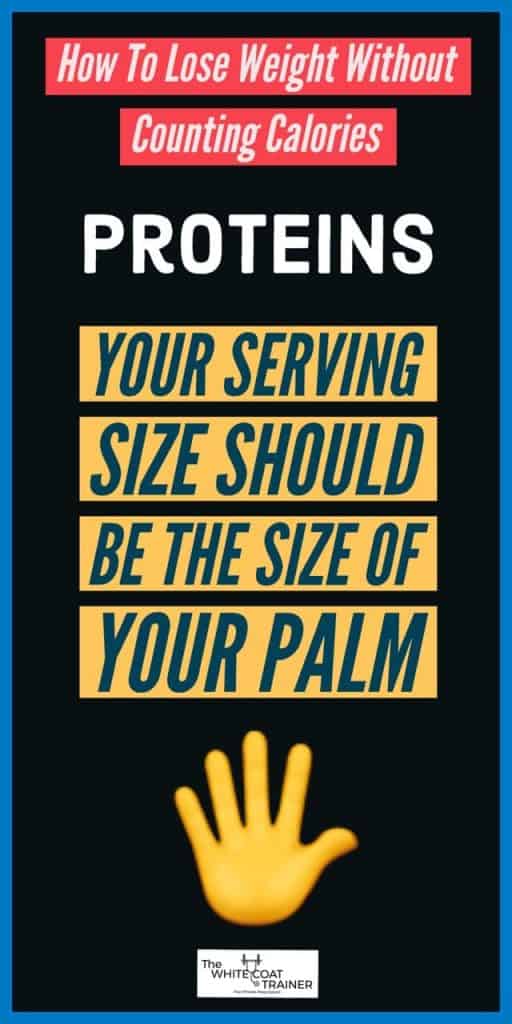
PROTEIN PORTION GUIDELINES
- The size of your palm determines your protein serving size.
- Women can consume 1 serving per meal while men can consume up to 2 servings per meal.
How To Use This Technique To Lose Weight Without Starving
If your goal is to lose weight, do your best to stick to the recommended guidelines I have provided above.
Men should consume anywhere from 1-2 servings of each macronutrient at each major meal.
This means consuming 1-2 fist of vegetables, 3-8 ounces of protein, and 1-2 thumb-sized servings of fat at each major sitting. If you are going to consume non-vegetable carbohydrates (rice, pasta, breads), only consume 1-2 cupped hands per meal.
Women should consume 1 serving of each macronutrient at each major meal.
This means consuming 1 fist of vegetables, 3-4 ounces of protein, and 1 thumb-sized serving of fat at each major sitting. The non-vegetable carbohydrate should only be 1 cupped hand serving.
If you stick to this approach of portion control, you will likely begin to notice weight loss in ~2 weeks.
If you do not notice any difference, then begin to decrease the quantity of the fat and the carbohydrate serving sizes by a small margin. Repeat for an additional 2 weeks.
It is important that you allow a sufficient amount of time before determining if your strategy is working.
Expect to lose approximately 1% of your body weight per week.
What If I Still Want To Know My Calorie Count? What Is The Easiest Way To Count Calories?
For those of you who are adamant about knowing the calorie content of your food, here is a simple way to calculate it anyway.
You would still use the hand measuring technique discussed before.
HOW TO ESTIMATE THE CALORIES IN CARBOHYDRATES
- Half a cup of non-vegetable carbs is approximately 100-150 calories
- 1 cup of vegetables almost has a negligible amount of calories
- Beware of liquid carbohydrates (soda, juice etc) 8 ounces of these beverages are another 100-150 calories
HOW TO ESTIMATE THE CALORIES IN FAT
- One tablespoon of liquid (olive oil, flaxseed oil, coconut oil) and semi-solid fats (nut butter) is approximately 100 calories
- One tablespoon of solid fats (nuts, avocados, seeds) is approximately 50 calories
HOW TO ESTIMATE THE CALORIES IN PROTEIN
- 3-4 ounces of protein is approximately 200-300 calories from animal based protein (chicken, steak, fish)
- Legumes are also carbohydrate-based, so it is easier to use your cupped hand (~1/2 cup) as the serving size. Again this will be approximately 100-150 calories.
Other Strategies That You Could Use For Intuitive Eating
Okay, so now you have a pretty good sense of how much of each food you should be eating.
One more thing you can do to complement intuitive eating is to avoid liquid calories.
This is the number one bad habit you can break right now! (Check out 7 Bad Eating Habits You Can Change Immediately to learn a few more.)
Juices, sodas, lattes, smoothies, and alcohol all have hundreds of calories that you could guzzle down in seconds!
Eliminating these drinks from your diet will lead to a major improvement in your eating habits.
Do your best to consume water and only with all of your meals. Ditch the sports drinks, juices, and sodas. If you absolutely have to have a flavored drink, try sparkling or fruit-infused water.
Stop Counting Calories And Start Losing Weight Today
So there you have it.
This is the simplest way to quantify the amount of food you are consuming without having to actually weigh, measure, or count calories again.
These portion guidelines can be used wherever and whenever you go and can help you determine how much food you should consume in one sitting.
With that said, do not forget that portion control is only one factor in long-term dieting.
Use the principles discussed here and in Part 1 to ensure that you are consuming high-quality foods from each food group at every sitting.
That is why we created a fully comprehensive step-by-step nutrition plan for busy professionals.
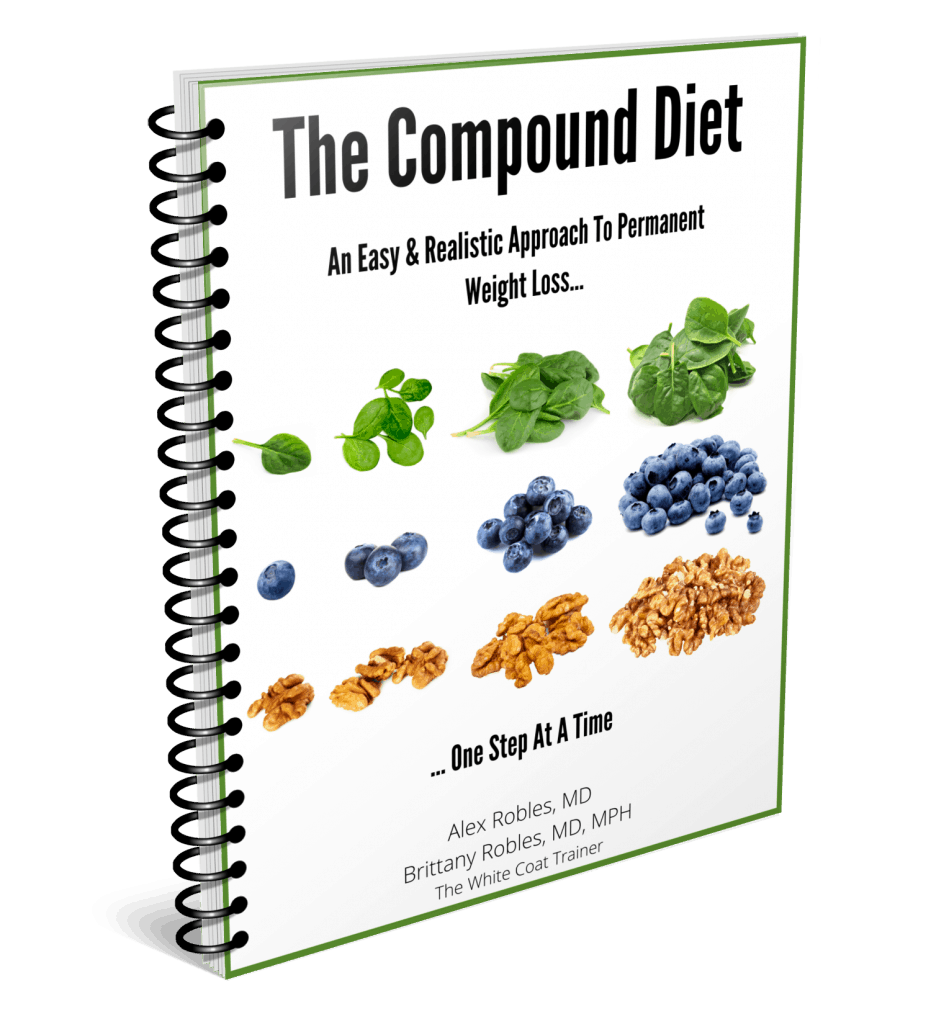
It is a compilation of 24 easy and practical dietary and lifestyle changes you can make, no matter how busy your schedule is.
Final Thoughts
So in a nutshell…
- Consume a high-quality food from each food group in every meal.
- Use the size of your hand to determine your portion sizes at each sitting.
- Women should consume ~1 serving of each food group at each sitting while men can consume 1-2 servings.
Now we turn it over to you.
Are carbohydrates the major macronutrient in your diet?
Have you ever counted calories for any amount of time?
How many items in your refrigerator say fat-free?
Comment below and let us know.
Next, You Should Read:
- 3 Basic Principles Of Diet Planning You Need To Know
- How To Lose Weight Without Starving [10 Science-Based Tips]
- Diet Vs Exercise- Whats More Important?

Alex Robles, MD, CPT / Brittany Robles, MD, MPH, CPT
Alex & Brittany Robles are physicians, NASM Certified Personal Trainers, and founders of The White Coat Trainer: a resource dedicated to improving the health and fitness of busy professionals using time-efficient strategies. Their advice has been featured in My Fitness Pal, Prevention, Livestrong, Reader’s Digest, Bustle, The Active Times, and more. Learn more about them here.
